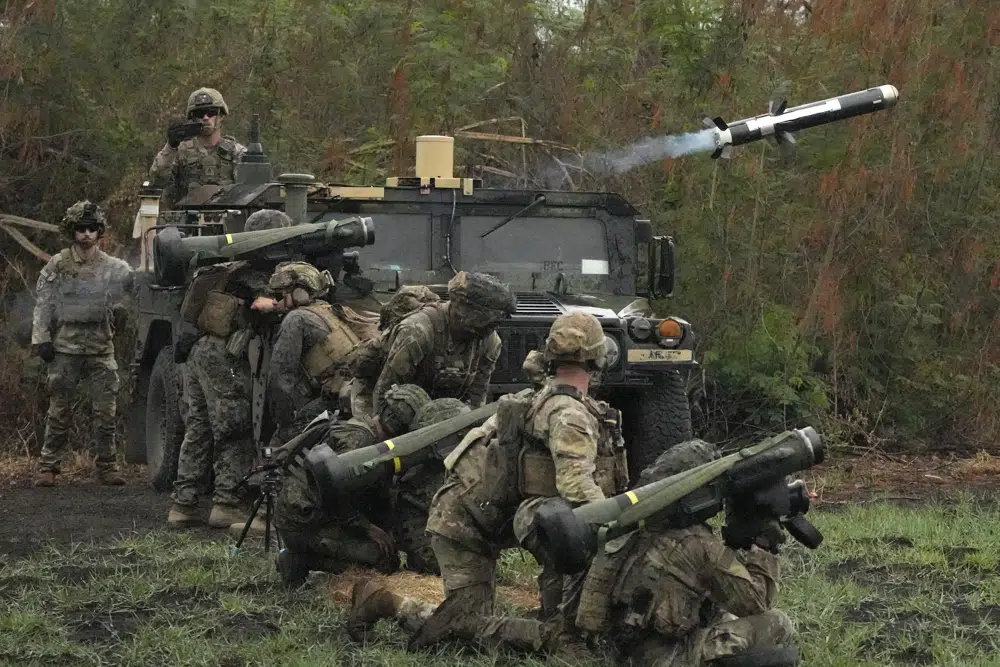US displays firepower in combat drills with Philippines

Fort Magsaysay, The Gulf Observer: U.S. and Filipino forces on Thursday blasted vehicles with anti-tank missiles in combat-readiness drills in the Philippines that are part of a show of American firepower.
The long-time treaty allies are holding their largest joint military exercises called Balikatan — Tagalog for shoulder-to-shoulder — in decades. They involve about 17,600 military personnel and will feature live-fire maneuvers, including a ship-sinking rocket attack and beach assaults to simulate retaking an island near the disputed South China Sea.
In a gunnery range at Fort Magsaysay, a northern Philippine training camp for Filipino special forces, American and Filipino troops fired Javelin guided missiles toward three target vehicles simulating a battle zone. The missiles streaked at a low altitude for more than half a kilometer (half a mile) toward their targets and exploded in a fireball that shook the ground.
“This is what it looks like when the U.S. and Philippine militaries come together, train together,” U.S. Army Pacific commander Gen. Charles Flynn said.
“What you’re witnessing here today is really operationalizing everything that our political leaders are talking about from integrated deterrence to campaigning to building an enduring advantage,” Flynn told journalists invited to witness the drills.
U.S. troops also displayed other weapons including sniper rifles with night-vision scopes that could hit targets more than a kilometer (half a mile) away with high precision, and High Mobility Artillery Rocket Systems, or HIMARS, which are rocket and missile launchers that have been used by Ukrainian forces against Russia.
Philippine army chief Lt. Gen. Romeo Brawner said the Philippine military wants to acquire Javelins and HIMARS from the United States under a special foreign military sales arrangement that is part of efforts to modernize the Armed Forces of the Philippines.
It’s uncertain when the Philippines can secure such weapons while Ukraine presses the U.S. and other Western nations for more military assistance, he said.
“These weapon systems are relatively more affordable for us as we shift to external defense,” Brawner said.
Marcos also approved a wider U.S. military presence in the Philippines by allowing rotating batches of American forces to stay in four more Philippine military camps.


